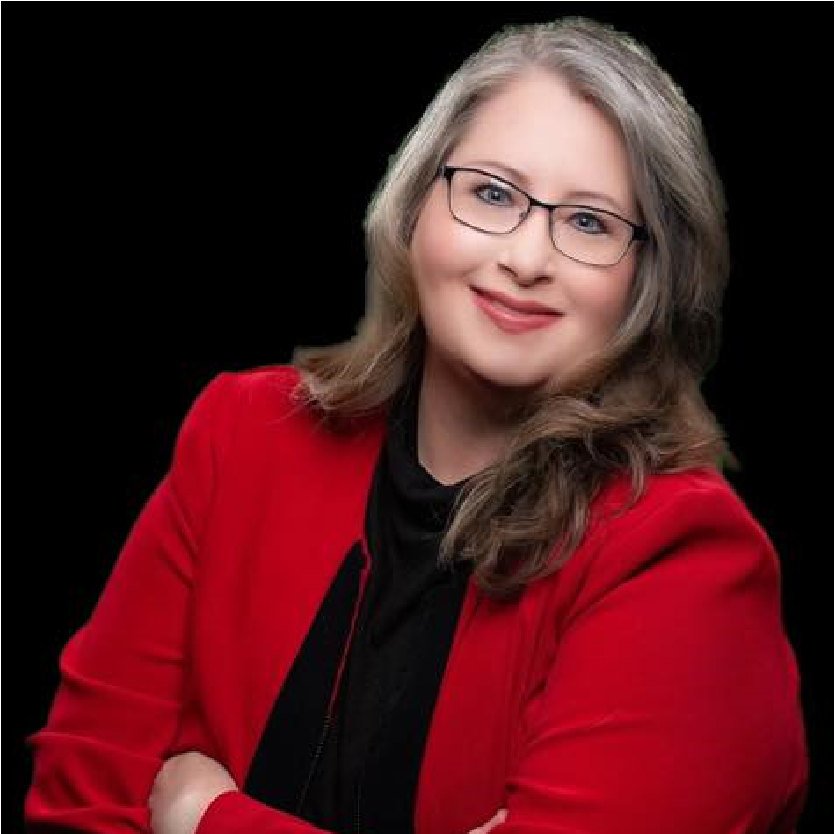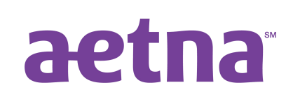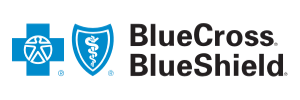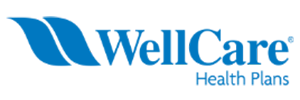Medicare Plans in North Dakota
Know your options for Medicare plans in North Dakota, whether you’re looking for Original Medicare or Medicare Advantage.

North Dakota has more than 139,000 people enrolled in Medicare – and the number of plan options is also growing. Comparing the different plans is key to finding the best plan for you.
Medicare plan options include:
- Original Medicare (Part A and Part B)
- Medicare Advantage
- Medicare Part D
You may also elect to add a Medicare Supplement Plan (Medigap) to go along with Original Medicare to help with additional out-of-pocket expenses.
Before you pick a plan, learn about your costs, coverage, and choosing the best Medicare plan for your needs.
- Average costs of Medicare in North Dakota: In 2023, Medicare Advantage premiums decreased 7.5% from $38.76 to $35.86. The lowest Part D plan in North Dakota is $4.70.
- Average expenditure per enrollee: In North Dakota, the average Medicare spending per enrollee is $9,449.
- Number of enrollees in North Dakota: As of 2023, 139,473 individuals are enrolled in Medicare in the state of North Dakota. Approximately 31,888 individuals are on a Medicare Advantage Plan.
- Medicare Advantage availability: North Dakota has had a 17.4% increase in Medicare Advantage Plans since 2022.There are 27 North Dakota Medicare Advantage Plans available in 2023, which is an increase from 23 plans in 2022.
Who Qualifies for Medicare in North Dakota?
To qualify for Medicare, you must meet certain eligibility requirements. First, you must be a U.S. citizen or permanent resident. You must also be at least 65 years old or have a disability and receive Social Security Disability Insurance (SSDI) benefits for at least 24 months. You may qualify for Medicare at a younger age if you have end-stage renal disease (ESRD) or amyotrophic lateral sclerosis (ALS or Lou Gehrig’s disease).
How does North Dakota Medicare enrollment work?
If you start receiving your Social Security or Railroad Retirement Board (RRB) benefits at least four months before you turn 65, you’ll be enrolled in Medicare automatically. Otherwise, you must fill out an application online or contact your local Social Security office. You can enroll in Medicare during the following periods:
- Initial enrollment: Your Initial Enrollment Period (IEP) starts three months before your 65th birthday and ends three months after your 65th birthday. If you’ve never had Medicare, you can enroll during this period. If you started receiving Medicare when you were younger, you can also make changes to your plan.
- General enrollment: Choose this enrollment period if you missed your IEP. The Medicare General Enrollment Period (GEP) is Jan. 1 to March 31. You can choose Original Medicare, Medicare Advantage, Medigap, or Part D.
- Medicare Advantage open enrollment: You can make changes to your Medicare Part C, also known as Medicare Advantage, from Jan. 1 to March 31.
- Open enrollment: You can join, switch plans, or drop your coverage from Oct. 15 to Dec. 7 each year.
- Special Enrollment Periods (SEPs): You may qualify for a SEP if you lose your coverage or have changes to your eligibility outside the regular enrollment periods.
Expert tips for enrolling in Medicare in North Dakota
- Beware of late penalties: You will be penalized if you do not enroll in Medicare A, B, and Part D when you become eligible. To avoid late enrollment penalties, you must have creditable coverage through group health insurance or the U.S. Department of Veterans Affairs (VA). Medicare Part A penalty only applies if you don’t qualify for premium-free coverage, and you don’t enroll for the plan when you first become eligible.
- Get the right plan: Make sure to consider your coverage area, the doctors you see, and overall health care needs. Check to see if your doctors and medical facilities that you use and prefer are in-network with the plan you choose. If you have a health condition that requires you to travel out of state to specialty clinics, consider if they will be covered. When searching plans only look for those that are specific to your coverage area. If you travel a lot, you may want a plan that has a larger network of coverage and is accepted beyond North Dakota.
- Know your prescription drugs and pharmacy: When considering prescription drug coverage make sure you have a list of what you take and know what pharmacy you will be using. There are tools through Medicare.gov or licensed agents that can determine what plan covers your drug cost the best and if your pharmacy will be in-network. You may assume that all prescription drug plans (PDPs) are created equal, but every drug plan has different formularies and network providers.
- Don’t procrastinate: If you wait until the last minute, you may miss something important. Be familiar with enrollment periods and deadlines. Three months prior to your eligibility month is a good time to start comparing plans, enrolling and preparing.
- If you don’t know, ask! Don’t be afraid to ask for help. Ask questions. Reach out to the Social Security Administration (SSA) or local licensed insurance agents. Utilize resources provided when you have questions.
Medicare Plans in North Dakota
North Dakota has several Medicare options available to U.S. citizens or permanent residents at least age 65. You are eligible if under age 65 and you have ESRD, ALS, or have been disabled for at least 24 months and draw SSDI.
- Original Medicare: Coverage consists of two parts: Part A (hospital insurance) and Part B (medical insurance). Medicare Part A covers benefits such as hospital, home health, hospice, and skilled nursing care facilities. Part B covers doctors’ visits, outpatient services, emergency care, labs, diagnostic testing, preventative, and medical supplies. It can also cover some medications that have to be administered at a clinic or facility and cannot be self-administered.
- Medicare Advantage (Part C or MA): Medicare Advantage is an alternative to Original Medicare with plans sold by private insurers. Many plans include prescription coverage and may also cover gym memberships, dental, vision, hearing, and transportation to medical appointments, giving you more coverage than Original Medicare.
- Medigap: Medigap plans are standardized plans sold by private insurance companies. Plans are designed to pick up costs where Original Medicare leaves off in coverage.
- Medicare Part D: Part D is prescription drug coverage you add to Original Medicare or Medicare Advantage. Plans are offered by private insurance companies but are regulated by Medicare.
Original Medicare
Original Medicare is the standard coverage for Medicare beneficiaries and has two parts: Part A (hospital insurance) and Part B (medical insurance). Here’s a look at the details about Original Medicare:
- Part A: Medicare Part A covers benefits such as hospital, home health, hospice, and skilled nursing care facilities. Part A covers 80% of your medical costs and you are responsible for the remaining deductibles, copay, coinsurance and remaining out-of-pocket expense. Part A is usually premium free if you or your spouse have paid the required Medicare tax. If you did not meet the required Medicare tax to qualify for a free premium, you could pay up to $506 per month for Part A.
- Part B: Part B covers doctors’ visits, outpatient services, emergency care, labs, diagnostic testing, preventive and medical supplies. It can also cover some medications that have to be administered at a clinic or facility and cannot be self-administered. Part B premium is based on Income Related Monthly Adjustment Amount (IRMAA) but the average cost is $164.90 per month. You will be responsible for 20% of your medical cost after meeting a yearly deductible of $233 (in 2023).
Who Original Medicare is best for: Original Medicare is a good option if you want more flexibility. It has a broad coverage area throughout the U.S. If you have several health conditions, you may want to pair your Medicare with a Medigap. Because Original Medicare does not cover prescriptions, enrolling in a stand-alone drug plan is important. If not paired with a Medigap, the out-of-pocket cost is a drawback to the plan.
Original Medicare in North Dakota:
| Part A premium | Standard Part B premium |
|---|---|
| Usually free | $164.90 per month |
|
|
Medicare Advantage Plans
An alternative to Original Medicare, Medicare Advantage Plans – also known as Part C – cover everything Part A and Part B do, but typically offer additional coverage.
North Dakota Medicare Advantage programs have networks and may only be available in certain areas of North Dakota. Plan options are based on ZIP code. These plans usually consist of copayments, deductibles, and out-of-pocket maximums that you are responsible for. However, plans can start at a $0 premium and go up from there. The average monthly premium in North Dakota is $35.86 (in 2023).
The North Dakota Medicare Advantage Program is made up of four types of plans:
- Health maintenance organization (HMO): HMO plans generally provide coverage only at in-network providers except in medical emergencies. You usually need to have a primary care physician (PCP), who can give you a referral to see specialists. Most HMO plans include prescription drug coverage.
- Preferred provider organization (PPO): PPO plans have a network of health care providers and facilities where your care will cost less. You can use out-of-network providers as well but your care will cost more. You usually do not need a primary care doctor to get referrals to see specialists or receive treatment. Most PPO plans include prescription drug coverage.
- Private fee-for-service (PFFS): PFFS plans allow you to use any Medicare-approved provider. Some PFFS plans have networks of providers where you can receive lower-cost care. You don’t need referrals to see specialists in PFFS plans but prescription drugs are not always covered.
- Special needs plans (SNPs): SNPs are for beneficiaries with specific diseases or characteristics. These plans tailor benefits and providers to the special needs of the group they serve. Generally, you are limited to the network of providers the plan offers and need a primary care doctor and get referrals to specialists. All SNP plans include prescription drug coverage.
The best Medicare Advantage Plan is the one that meets your individual needs and matches what is most important to you in terms of costs, choice of providers, and ease of access. North Dakota has 23 plans available in 2022. Medicare Advantage has continued to rise in popularity with North Dakota residents.
Who Medicare Advantage Plans are best for: This type of plan is best if you are on a fixed income or you are in good health and don’t want to overpay for coverage you don’t use very often. Having one card to use and the additional benefits bundled in the plan can be attractive. To be eligible, you need to be enrolled in Medicare Part A and Part B.
The downsides to Medicare Advantage Plans are mostly related to a limited choice of providers and service areas. Prior authorizations and referrals may also be necessary before receiving certain procedures.
Compare North Dakota Medicare Advantage Insurance Companies:
Compare North Dakota Part C plan options:
| Plan name | Monthly premium | Yearly drug and premium cost | Deductibles |
| Medica Prime Solution Standard (Cost) | $0 | $0 | Health: $0
Drug: N/A |
| Humana Honor (PPO) | $0 | $0 | Health: $0
Drug: N/A |
| AARP Medicare Advantage Patriot (PPO) | $0 | $0 | Health: $0
Drug: N/A |
Plans calculated based on Bismarck ZIP code 58501.
Medicare Prescription Drug Coverage Plans
Medicare Part D is offered by private insurance but is regulated by Medicare. Part D can be purchased as a stand-alone PDP or as part of a Medicare Advantage Plan (MA-PD).
North Dakota Part D premiums start at $4.70 a month.
Currently, there are 24 stand-alone PDPs in North Dakota. Seven of the stand-alone plans and nine Medicare Advantage Plans with prescription drug coverage participate in the Senior Savings Model, which lowers the cost of insulin out of pocket.
Who Part D plans are best for: PDPs are always best even if you don’t take any medications. If you do not enroll when becoming eligible, you will be penalized for every month you do not have one.
Compare North Dakota Part D insurance companies:
Compare North Dakota Part D plan options:
| Plan name | Monthly premium | Yearly drug and premium cost | Deductible |
| SilverScript SmartSaver (PDP) | $4.70 | $56.40 | $505 |
| Wellcare Value Script (PDP) | $7.50 | $90 | $505 |
| Humana Walmart Value RX (PDP) | $30.50 | $366 | $505 |
Plans calculated based on Bismarck ZIP code 58501.
Medicare Supplement Insurance Plans
Medigap plans are standardized plans sold by private insurance companies. These plans are designed to pick up costs where Original Medicare leaves off in coverage. There are 10 standardized plans available in North Dakota designated by different letters of the alphabet (A, B, C, D, F, G, K, L, M, and N). Plans C & F are only eligible to those who became eligible for Medicare prior to Jan. 1, 2020.
A Plan G for a 65-year-old nonsmoking female in Bismarck ranges from $103 to $226 per month. You will also be responsible for the Part B deductible of $233.
Who Medigap plans are best for: Medigap is a good fit if you utilize benefits frequently, do not want to be restricted to a small coverage area, and prefer to choose your own provider. You should not choose a supplement if you cannot afford the monthly premium and you want extra benefits available with Medicare Advantage, such as having the PDP, dental, vision, and hearing benefits included.
If you are considering purchasing a supplement, always check to see if the company offers additional discounts for having people that live in your household or for nonsmoking.
Compare North Dakota Medigap plan options:
| Plan name | Monthly premium range | Copays/coinsurance | Deductibles | Plan benefits |
| Plan F | $112 to $274 | $0 | $0 hospital (Part A)
$0 medical (Part B) |
|
| Plan G | $103 to $226 | $0 | $0 hospital (Part A)
$233 medical (Part B) |
|
| Plan N | $75 to $190 | $0 Generally your cost for approved Part B services with some $20 and $50 copays | $0 hospital (Part A)
$233 medical (Part B) |
|
Calculated based on a nonsmoking 65-year-old female in Bismarck ZIP code 58501.
How To Compare North Dakota Medicare Plans
North Dakota residents have many plan options available. It is always good to make a list of pros and cons of the plans. Important things to consider are out-of-pocket costs, provider network, coverage area, insurance company ratings, and the overall ability of the plan to meet your specific need.
Expert tips for comparing Medicare plans:
- Premiums: This is how much you pay for coverage monthly, regardless of the care you receive. You may need to pay your plan’s premium in addition to the Medicare Part B premium, although some plans have $0 premiums or help pay for your Part B premium.
- Deductible: Your deductible is the amount you must pay before your insurance plan starts helping cover the costs. Medicare Advantage Plans set their deductibles and these may change only once per year on Jan. 1.
- Copay/coinsurance: A copay is an amount you pay as your share of the cost for a service, such as a doctor’s visit or prescription drug. It is usually a set payment. Coinsurance is a percentage, for example, 20%, that you pay as your share of the cost for a service after you pay deductibles.
- Out-of-pocket cost: Medicare Advantage Plans come with an out-of-pocket maximum dollar amount that is the most you may have to pay for your Medicare-covered benefits in a year. Costs for health care services or supplies that are not covered or partially covered, such as dental, vision, and hearing benefits, do not count toward your maximum out-of-pocket amount. If you have Original Medicare without a Medigap policy to cover out-of-pocket costs, there is no cap on how much you will have to pay.
- Coverage area: The specific geographic area that your plan covers. Original Medicare has a large coverage area. It can be used throughout the U.S. and its territories. A Medicare Advantage Plan may be more restrictive. Sometimes, the coverage area is only in a specific state or ZIP code area.
- Star rating: Measures performance of Medicare Advantage and PDP plans. Medicare uses this system to score things like quality of care and customer service. The range is from 1 to 5, with 5 being the highest and 1 the lowest.
- Benefits: The perks of what your plan covers. Benefits are the items included in your plan that go toward your medical cost. For example: A Medicare Advantage Plan has an additional benefit by offering dental coverage.
- Provider choice: It is when you choose the provider you want to use. Sometimes, choosing to have a provider network and seeing specific providers can be beneficial. These types of plans that have you select a provider can have discounted costs. The provider has elected to participate in-network discounts.
How Much Does Medicare Cost in North Dakota?
- Original Medicare: Part A premiums can range from $0 to $506 per month. The Medicare Part A hospital deductible is $1,6000 for each benefit period. Part B, most people pay the standard premium of $164.90 per month. The deductible for Part B is $233.
- Medicare Advantage Plans: The average cost of a North Dakota Medicare Advantage Plan is $35.86 in 2023. Some plans start as low as a zero premium.
- Part D plans: The lowest monthly premium starts at $4.70.
- Medigap plans: Plan G cost for a nonsmoking female age 65 in Bismarck $103 to $226.
Medicare in North Dakota by the Numbers
| People enrolled in Original Medicare | Average plan cost | Annual North Dakota spending per beneficiary | Spending per beneficiary compared to the national average |
| 107,585 | Part A: $0 to $506 per month*
Part B: $164.90 ** |
$9,449 | 18% less |
*Most people pay no premium but this can vary depending on how long they paid Medicare taxes.
**This is the average number but it can vary based on income.
Medicare Resources in North Dakota
Making Medicare decisions can be overwhelming at times. It is good to utilize the resources and tools available in North Dakota. The organizations have people knowledgeable in the programs specific to your state. Most of the services provided are free. An example is North Dakota Insurance Department’s State Health Insurance Counseling (SHIC), which can give you free information and guidance for navigating Medicare.
Never be afraid to ask questions. Get started with these North Dakota Medicare resources:
North Dakota Medicare Resources
| Organization | How you can get help | Contact Information |
|---|---|---|
| North Dakota SHIC | Counselors are available for free with information, education, and guidance with Medicare and its programs. | Website | (888) 575-6611 |
| North Dakota Senior Medicare Patrol (ND SMP) | Helps Medicare beneficiaries, their families, and caregivers to prevent, detect, and report health care fraud, errors, and abuse through outreach, counseling, and education. | Website | (701) 858-3580 |
| North Dakota Insurance Department | Acts as an advocate to protect you from scams and helps with decisions about private insurance and Medicare plans. The department can also answer your questions about rules and regulations of insurance companies. | Website | (701) 328-2440 |
| North Dakota State Government – Protection and Advocacy | Can provide you with legal advocacy for a wide range of disabilities. Some of the services include investigating violations involving abuse, neglect, civil rights, and discrimination. | Website | (701) 328-2950 |
| North Dakota Aging and Adult Services | The Department of Human Services administers programs and services that help older adults and adults with physical disabilities to live safely and productively in the least restrictive, appropriate setting. | Website | (855) 462-5465 |

Tammy Burns is an experienced health insurance advisor. She earned her nursing degree in 1990 from Jacksonville State University, obtained her insurance billing and coding certification in 1995, and holds a health and life insurance license in Alabama, Georgia, Iowa, Mississippi, and Tennessee. Burns is Affordable Care Act (ACA)-certified for health insurance and other ancillary, life, and annuity products. She maintains an active nursing license and practices private-duty nursing.
Burns’ background as a nurse, insurance biller and coder, and insurance consultant includes infectious disease, oncology, gynecology, phlebotomy, post operative, family medicine, geriatrics, home health, hospice, human resources, management, billing, coding, claims, fixed annuities, group and individual health and life products, and Medicare. She’s always been driven by a desire to help people, spending more than 25 years as a practicing nurse in hospitals, private doctors’ offices, home health, and hospice. As a nurse, Burns supported patients filing insurance claims with Medicare, Medicaid, and private insurance companies as well as responding to billing questions from confused patients.
Seeing firsthand how unsuspecting patients are frequently confused by an overly complex system they don’t understand led Burns to become an insurance agent and health care consultant, now helping people understand the medical system. Since becoming an insurance agent in 2013, she has worked with some of the largest and most reputable insurance carriers and agencies in the nation, and she has built a large and loyal clientele by way of her commitment to transparency and personalized service.

Tammy Burns is an experienced health insurance advisor. She earned her nursing degree in 1990 from Jacksonville State University, obtained her insurance billing and coding certification in 1995, and holds a health and life insurance license in Alabama, Georgia, Iowa, Mississippi, and Tennessee. Burns is Affordable Care Act (ACA)-certified for health insurance and other ancillary, life, and annuity products. She maintains an active nursing license and practices private-duty nursing.
Burns’ background as a nurse, insurance biller and coder, and insurance consultant includes infectious disease, oncology, gynecology, phlebotomy, post operative, family medicine, geriatrics, home health, hospice, human resources, management, billing, coding, claims, fixed annuities, group and individual health and life products, and Medicare. She’s always been driven by a desire to help people, spending more than 25 years as a practicing nurse in hospitals, private doctors’ offices, home health, and hospice. As a nurse, Burns supported patients filing insurance claims with Medicare, Medicaid, and private insurance companies as well as responding to billing questions from confused patients.
Seeing firsthand how unsuspecting patients are frequently confused by an overly complex system they don’t understand led Burns to become an insurance agent and health care consultant, now helping people understand the medical system. Since becoming an insurance agent in 2013, she has worked with some of the largest and most reputable insurance carriers and agencies in the nation, and she has built a large and loyal clientele by way of her commitment to transparency and personalized service.






